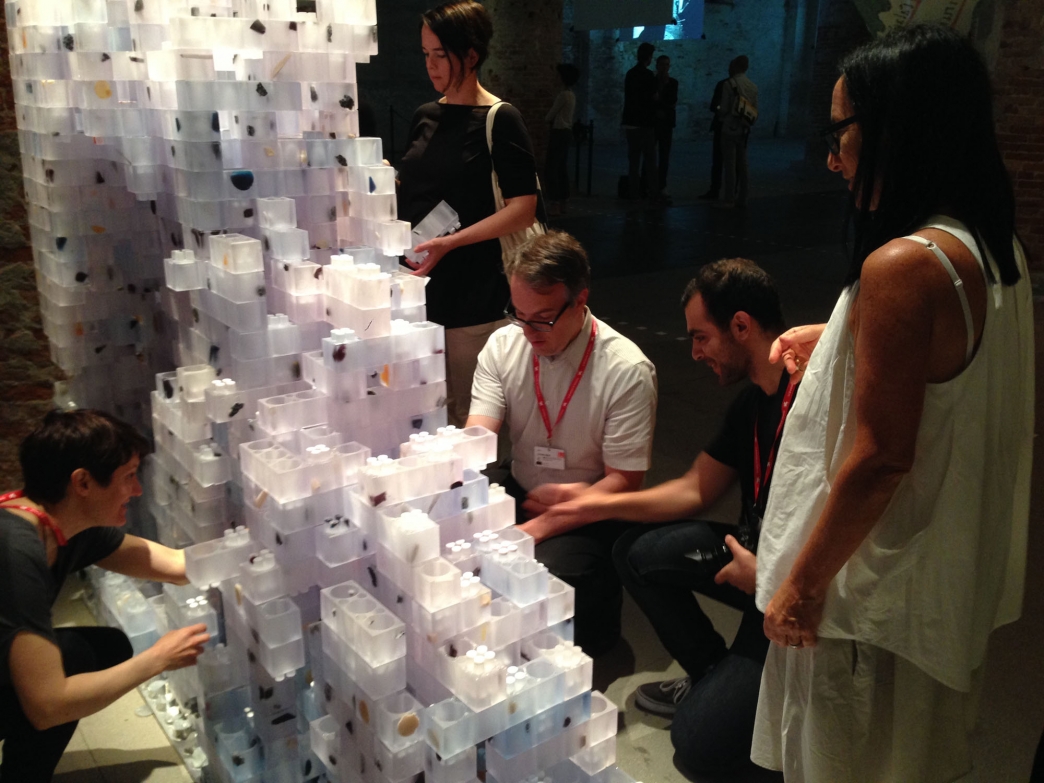Legible Pompeii
An installation at the 14th Venice Architecture Biennale.
By Lucia Allais and MOS (Michael Meredith, Hilary Sample)
Assistant Professor of Architecture Lucia Allais has been commissioned to curate a portion of the Arsenale pavilion at the 14th Venice Architecture Biennale. This pavilion, titled “Monditalia” offers a journey through Italy through sites that reveal how the country’s global character and local specificity and inseparable.
Allais curated an installation about the archaeological site of Pompeii, which has recently undergone a series of tragic collapses from over-use and under-maintenance. The installation places this recent state of emergency in a much longer history of destruction and reconstruction at Pompeii. To that effect, she commissioned the architectural firm MOS to design one component of the exhibition, working with Assistant Professor in Architecture Michael Meredith, who is one of the principals of MOS.
Description
A global archaeological laboratory, a city half-buried in a mound of lava, a sinkhole for cultural funds, a cipher for Italy’s cultural disarray—Pompeii is all of these things, but it is also a testing ground for preservation theories and practices. Since the Enlightenment, every mission to ‘discover’ the city has been followed by the invention of techniques to repair and stabilize it. Our installation describes and performs the problem of preserving Pompeii. It consist of two walls: The Data Fresco diagrams the history of Pompeiian conservation experiments. The Souvenir Pile offers ersatz Pompeiian matter, cast in resin blocks, to the Biennale public, as a material record of the site and a souvenir of the Italian cultural experience.
The Data Fresco, designed in collaboration with the graphic designers Multimillion, educates the eye of the visitor in recognizing the various techniques of preservation that have shaped Pompeii, and Italy at large.
The Souvenir Pile, designed by Meredith and his team, is made of a thousand resin blocks that represent the material state of one house in Pompeii (the House of Sallust). Allais and her team calculated the precise material composition of this house, researching its history, its architecture, and the various building systems used by Roman architects and preservationists in different eras. Meredith and his team then used this information to design the blocks. Each block contains a material sample representing one of the sixteen materials of which the site is made (such as lava, limestone, wood, and concrete). Blocks are also encoded with information about the prevalence and age of each of these materials. Most importantly, the blocks are designed to be desireable by the public, who is invited to take them home. By the end of the exhibition, the wall will have disappeared entirely.
Credits
Authors: Lucia Allais & MOS (Michael Meredith, Hilary Sample)
Team: Graphic Design: Multimillion (Katie Andresen, Michael Seitz;
Research: Justin Fowler, Clelia Pozzi, Louise Decoppet, Frederik Bruggink; MOS: Griffin Ofiesh; Fabrication: Benas Burdulis & Emil Froege
For further information please contact allais@princeton.edu, mmeredith@mos-office.net, and legiblepompeii@gmail.com





